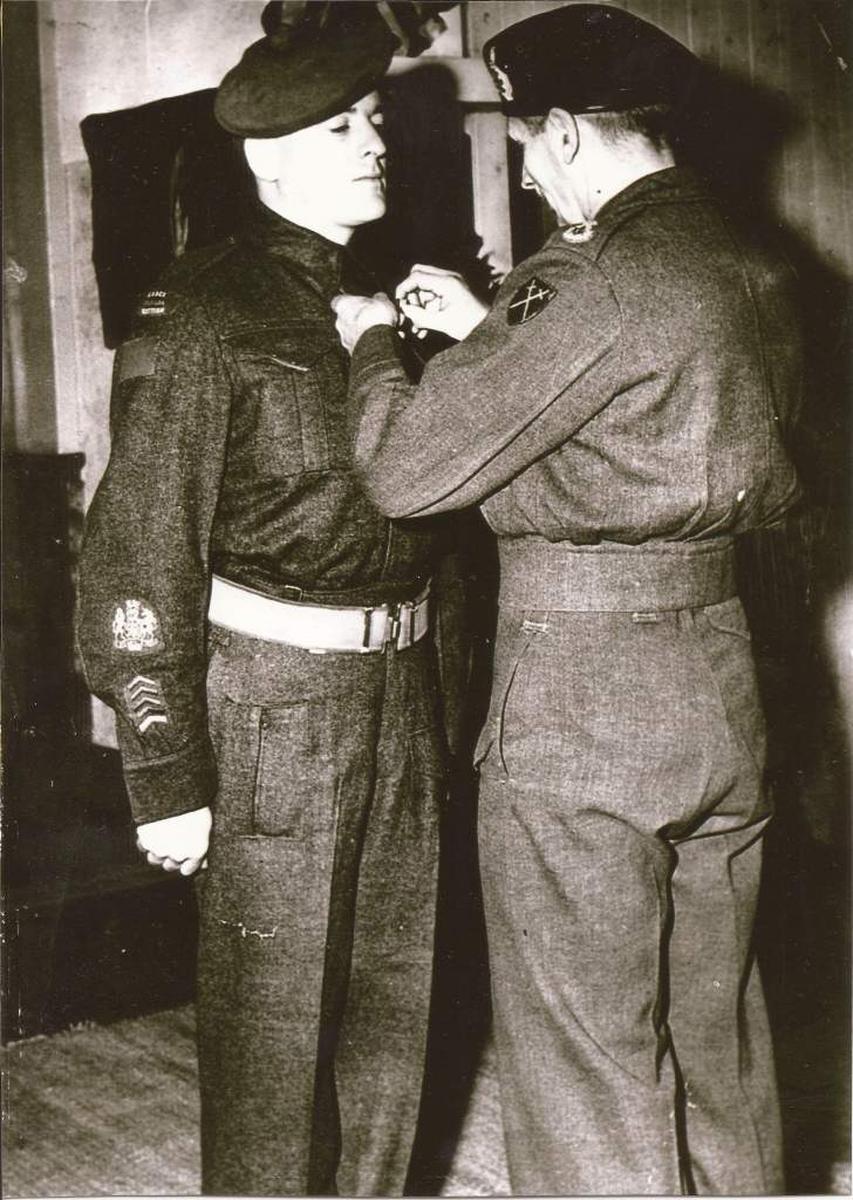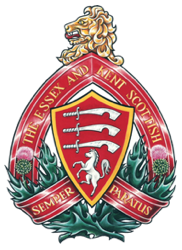Company Sergeant-Major Les Dixon, MM and 2bars

Company Sergeant-Major Frank Leslie “Les” Dixon was a member of the Essex Scottish Regiment during the Second World War. During his service, he received the Military Medal and two additional bars for bravery in the field.
Lance Sergeant Dixon earned his first Military Medal during the raid on Dieppe, France on 19 August 1942. Sergeant Dixon was foremost in taking his platoon through the first line of wire despite enemy fire that caused many casualties. Reorganizing his group he led them up to the sea wall and established light machine gun fire positions to engage the enemy. In the retirement he disregarded his own severe injuries to assist others to safety.
As a Company Sergeant Major (C.S.M.) he played a crucial role in Operation COBRA, south of Caen, France on 29 July 1944. After a preliminary artillery barrage, C.S.M. Dixon provided fire support when 16 Platoon, D Company was pinned down by German fire and could not advance. Dixon, in the company Universal Carrier (also called a Bren Gun Carrier), manned the Bren gun to support the platoon and also throwing grenades into the hedgerow as he passed. He and three other men dropped grenades into the German trenches, neutralizing the remaining defenders. His efforts led to a successful completion of the company’s mission. The regiment then had high ground that offered them a commanding view of the countryside and access to fresh water. For his role in Operation COBRA, Dixon received a bar to his Military Medal. Dixon’s tenacity and fortitude led company commander, Major Stewart Bull to describe him as a “regular firebrand.”
He received a second bar on his Military Medal on 19 February 1945 when the Essex Scottish were involved in the defense of Kranenburgshof on the Goch-Calgar Road, Germany attempting to hold Allied positions in the village. This battle, a part of the larger Operation VERITABLE, helped to weaken the German defenses along the Rhine River. Under the leadership of C.S.M. Dixon and Corporal Bill Moriarty, D Company, of the Essex Scottish were tasked with defending a farmhouse though surrounded by German tanks. Although he was eventually forced to withdraw, he managed to hold off numerous German assaults with a .30 calibre machine-gun, Bren gun fire, and PIAT rounds. His tenacity and bravery inspired the entire company.
Dixon’s gallant service continued at the Battle of Hochwald Forest on 1 March 1945, where on the right flank he played a pivotal role in D Company’s success. During a daring counterattack, he spotted a German machine-gun team in one of the farm buildings that was promptly destroyed by supporting tanks. He assisted in overrunning an 88-mm anti-tank gun so that they could use a barn to observe and subsequently eliminate the German infantry sheltering in trenches nearby. Dixon then suppressed and eliminated a German machine-gun team with two belts of .30 calibre machine-gun ammunition so that D Company could proceed with their objectives.
Through C.S.M. Dixon’s actions on the battlefield during the August 1942 Dieppe Raid and at the Caen-Falaise Road in July 1944, he was given the symbolic position of honouring the regiment’s past. On 3 September 1944, C.S.M. Dixon led the Essex Scottish back through the killing grounds at Dieppe as one of the few survivors of the raid on 19 August 1942. The ceremonial walk-through also commemorated the regiment’s recent successes.
Dixon is the only Canadian soldier who served in the Second World War to be awarded the Military Medal three times.
Story by Nicole Pillon, Canada Summer Jobs 2022 participant
with The Essex and Kent Scottish Regiment Association
Sources
- Duty Nobly Done, The History of The Essex and Kent Scottish Regiment by Sandy Antal and Kevin R. Shackleton (2006) : Chapter 12
- https://www.canadianletters.ca/document-6001


Dixon Receiving a third bar to his Military Medal from Field Marshall Bernard Montgomery.
